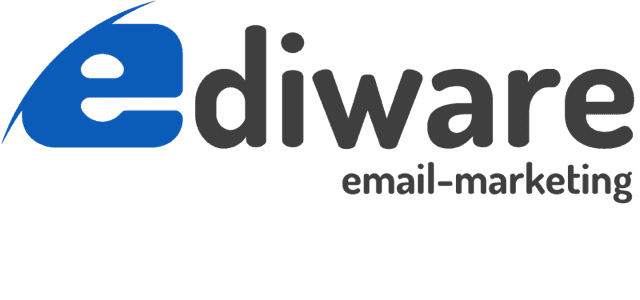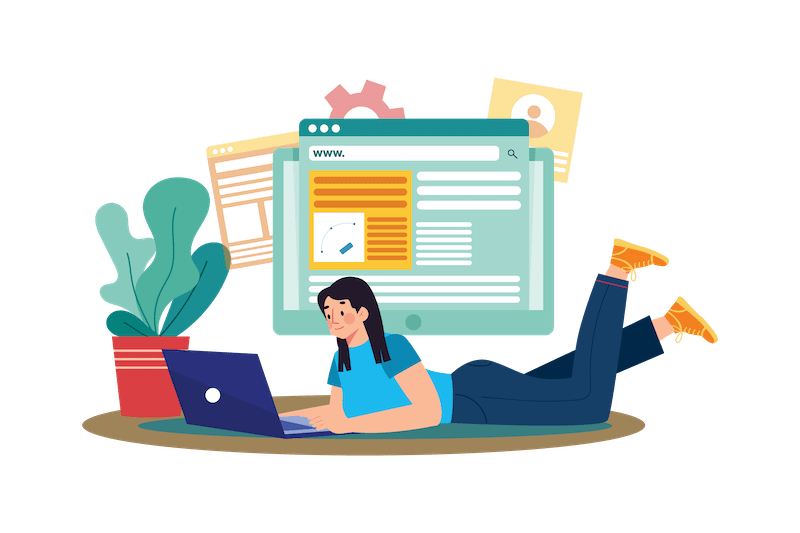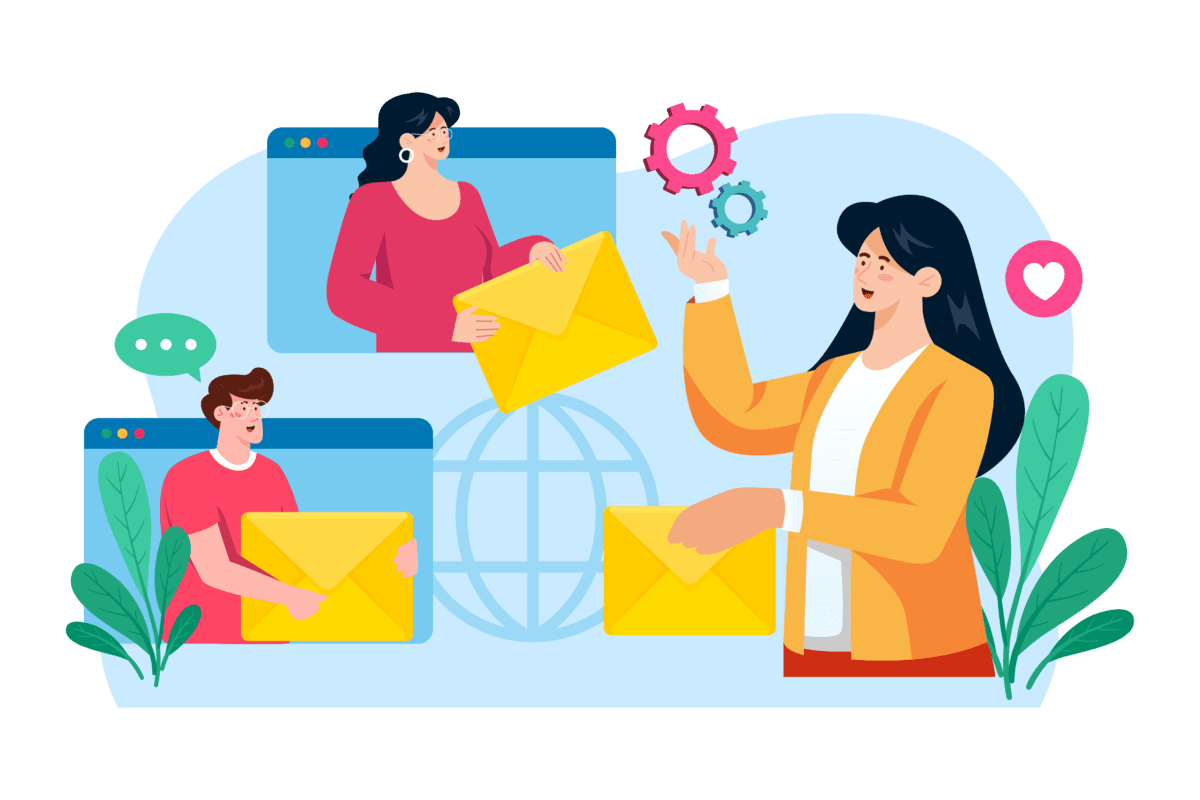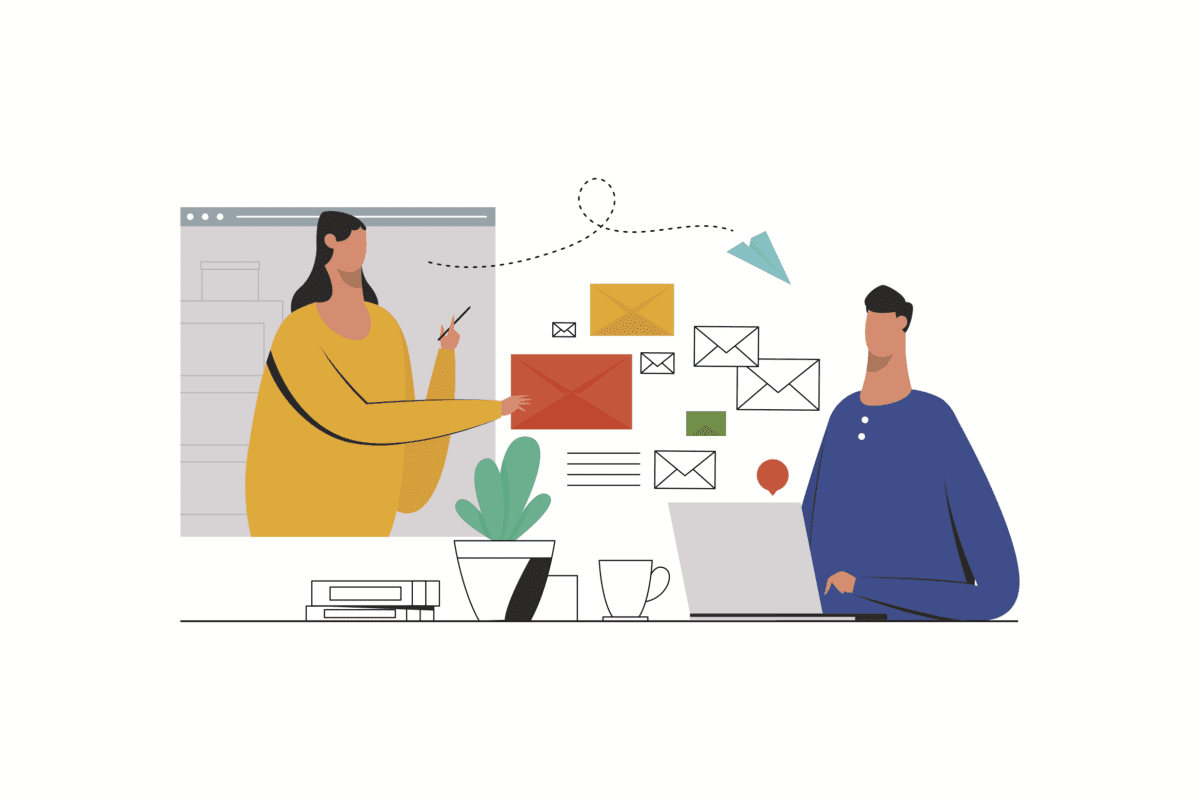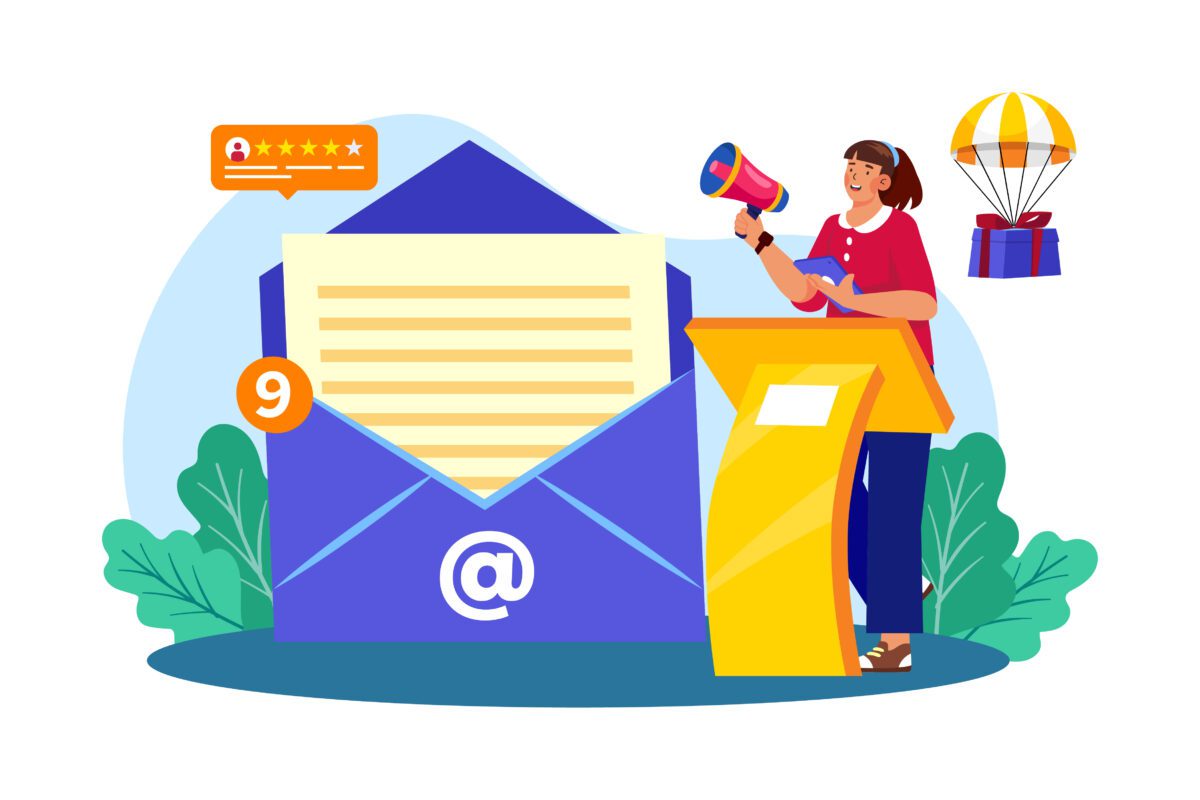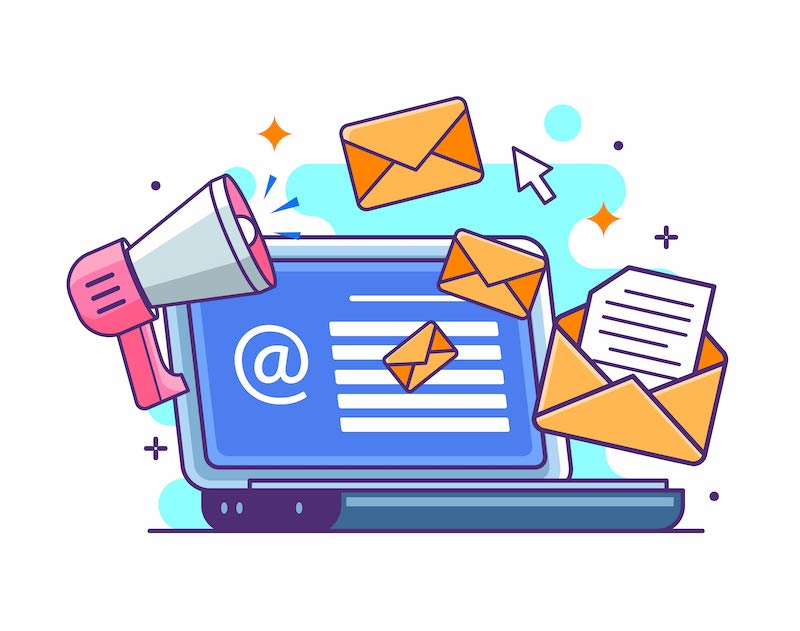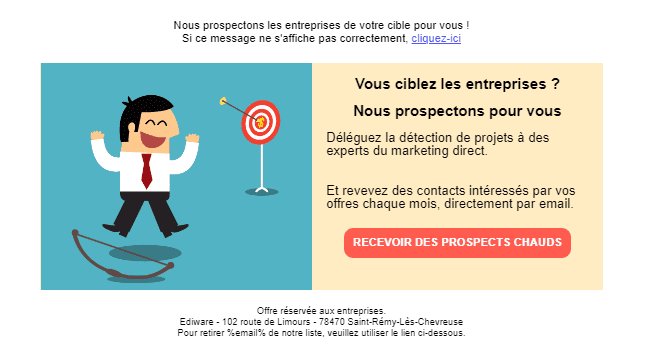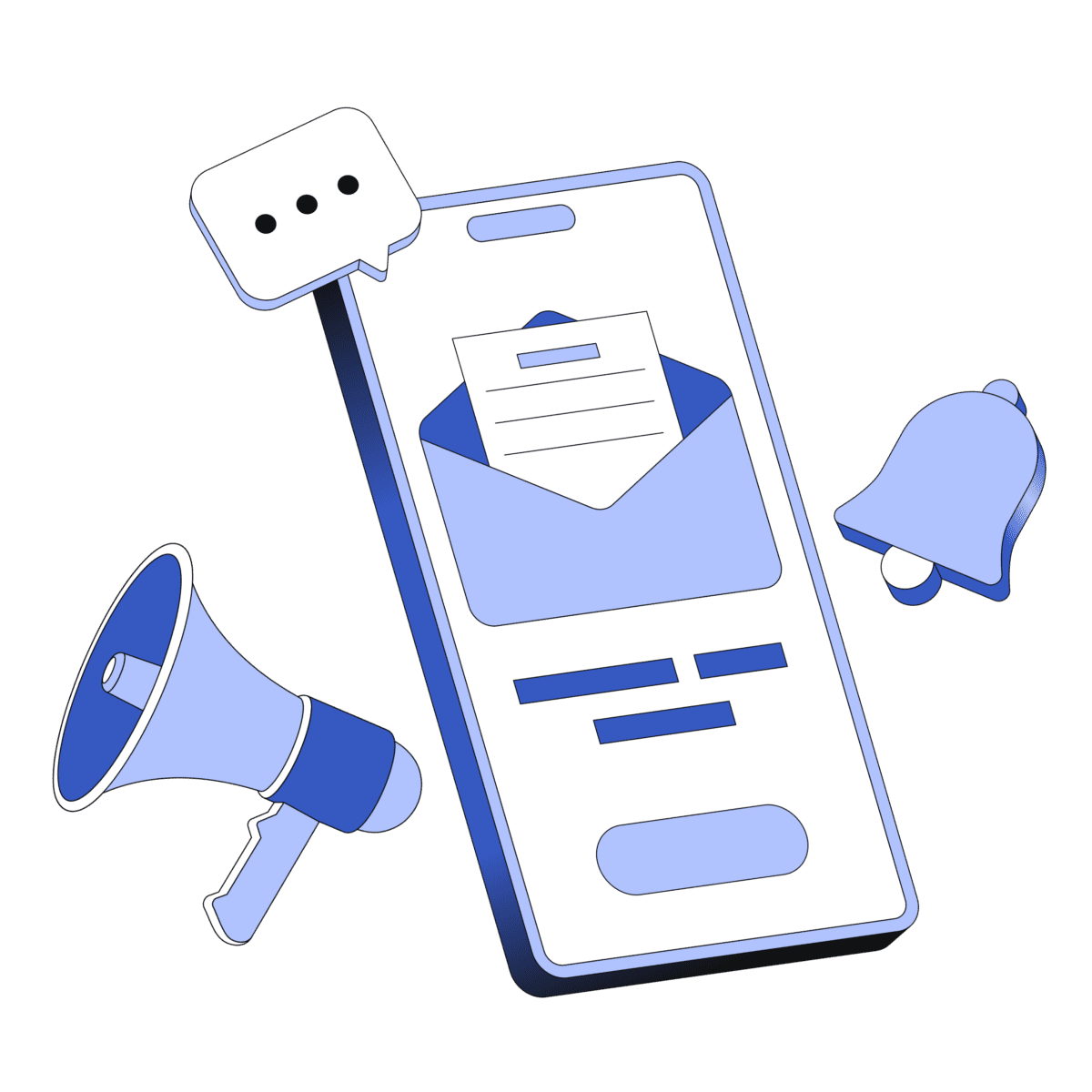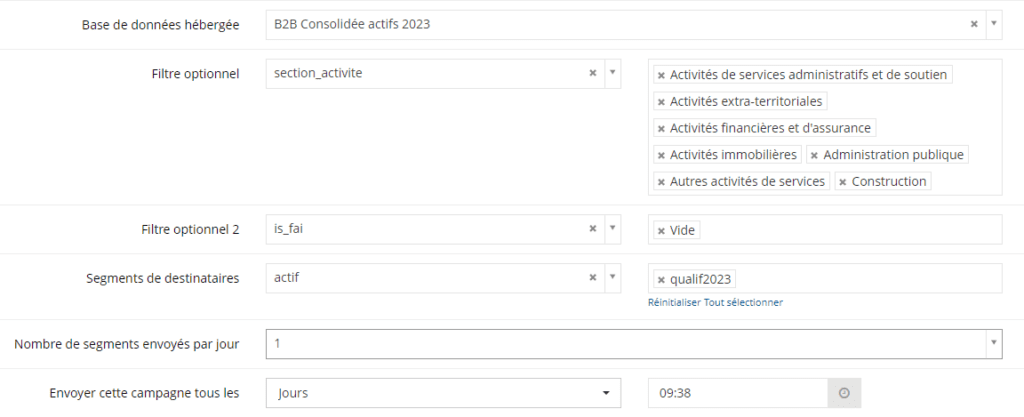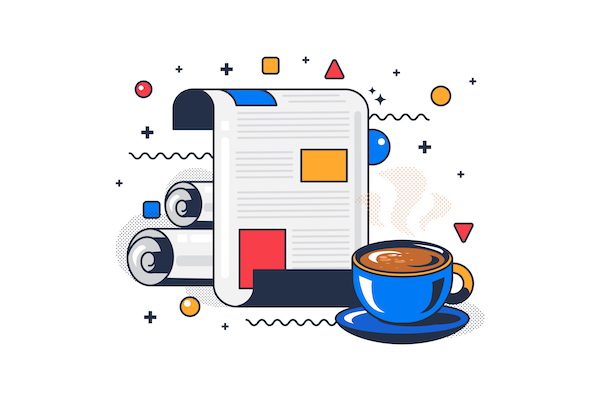E-mail marketing remains a powerful tool for reaching and engaging customers. But expectations are changing, and yesterday’s strategies are no longer enough. In 2025, brands will have to go beyond traditional campaigns to offer e-mails that are more personalized, interactive and respectful of subscribers’ preferences.
Artificial intelligence 🤖, inclusive design 🌍 and ethical commitment ✅ will play a key role in this transformation. Faced with more demanding consumers and ever-stricter data protection regulations, it’s becoming essential to innovate while strengthening trust and closeness with its audience.
Discover in this article the 7 major trends that will shape e-mail marketing in 2025 and how to apply them to improve your campaigns 📈.
1. AI to create relevant and engaging content
Writing a powerful e-mail takes time and creativity. Finding the right words, structuring the message and capturing the reader’s attention isn’t always easy. That’s where artificial intelligence comes into its own ✍️🤖.
💡 Time-saving content creation
AI can come up with topic ideas, formulate punchy sentences and structure an e-mail in seconds. It helps overcome lack of inspiration, and quickly provides a solid foundation on which to work.
❤️ More impactful, better-targeted e-mails
Thanks to its analysis of large quantities of data, AI can identify the writing styles that work best and suggest formulations suited to your audience. It helps to:
✅ Find effective hooks that capture attention right from the email subject line.
✅ Write clear, fluid messages tailored to recipients’ expectations.
✅ Test different versions of a piece of content to see which generates the most engagement.
🎯 Combining AI and human creativity for high-performance emails
AI is a powerful tool, but it cannot replace human sensitivity and intuition. The ideal is to use it as an assistant that makes writing easier, while leaving the final touches to the human touch. This makes it possible to produce more engaging e-mails, more quickly, while retaining a true brand identity.
❤️ How can we maintain a human and authentic approach?
Even if it’s automated, an e-mail should give the impression that it’s addressed personally to the recipient. To achieve this:
- Use a natural, engaging tone 🗣️.
- Add the recipient’s first name to create a more personal link.
- Encourage responses by avoiding no-reply addresses.
👉 With AI, content creation becomes more fluid and efficient, without sacrificing quality or personalization.
2. Advanced customer journey scenarios ⚙️
By 2025, email marketing sequences will have reached an unprecedented level of sophistication. Simple automatic responses will give way to multi-step, adaptive scenarios, capable of guiding each user through the 🛤️ customer journey.
Key points:
- Intelligent journey mapping 🗺️: Thanks to automation platforms, companies will be able to design workflows that adapt to customer actions (clicks, cart abandonments, downloads, etc.).
- Behavioral responses 🕵️: Systems will continuously analyze user interactions to send perfectly tailored e-mails, such as a cart abandonment reminder with a specific discount.
- Time-based personalization ⏰ Using data on time zones, browsing preferences and opening habits, campaigns will be able to reach users at the ideal time to maximize open rates.
Case in point:
A user adds a product to his shopping cart, but leaves the site without completing the purchase. Here’s an automated three-step scenario:
- D+1: A personalized reminder e-mail with a photo of the product.
- D+3: An e-mail including a time-limited promotional code to encourage purchase.
- D+7: A suggestion of additional products if the user has still not purchased.
Each e-mail is sent automatically based on the user’s behavior, without human intervention.
Key figures :
- On average, automated campaigns generate 320% more revenue than standard e-mails (source: Campaign Monitor).
- Multi-step workflows increase conversion rates by 50% to 100%, according to a Salesforce study.
Thanks to advanced automation scenarios, your e-mailing strategy will become more responsive and better aligned with your customers’ expectations, while reducing the time spent on manual tasks.
3 Interactive e-mail: making communication more engaging
Emails are no longer just static messages 📩. Today, they’re becoming truly interactive tools that capture attention and encourage action.
🎬 Integrate videos to capture attention
The image of a video player 🎥 with a play button is a great way to entice subscribers to click. This approach allows you to:
✅ Present a product or service in a few seconds.
✅ Share a quick tutorial to guide the user.
✅ Highlight an authentic customer testimonial.
🔹 A concrete example: an e-mail with a video thumbnail showing a play button. When clicked, we’re redirected to the video on YouTube, a landing page or an e-commerce site.
💡 Why does it work?
- Videos are more engaging 🎥: They hold attention longer than text.
- They increase click-through rates 👆 : Subscribers are more inclined to interact.
- They explain more than just text 📖 : Ideal for product launches or demonstrations.
✨ O ther interactive elements to be integrated
In addition to videos, other formats make your emails more engaging:
📊 Polls to collect one-click reviews.
📅 Appointment buttons to simplify scheduling.
🛍️ Links to personalized products for a tailored experience.
👉 By making your e-mails more interactive, you better capture your subscribers’ attention and boost their engagement 🚀.
4. Approaches focused on respectful and ethical personalization 🎯
E-mail personalization will be more essential than ever, but it will have to be based on responsible practices to earn users’ trust. Brands that master the art of personalization while respecting user preferences and control will stand out from the crowd.
Key points:
- User-provided data 📊: Focus on zero-party data, where information is shared directly by the user via surveys or integrated forms.
- Customizable preferences ✉️: Offer the possibility of defining content types and frequency of delivery. Users appreciate e-mails that they have configured themselves.
- Trust through transparency 🤝: Be clear about how data is used, and adopt a reassuring tone. For example, mention that the information collected is used exclusively to improve the user experience.
Case in point:
A clothing retailer sends out an e-mail asking customers for their preferences in terms of styles or brands. This information is then used to make personalized recommendations for future campaigns, increasing the relevance of the e-mails.
Impact:
Ethical personalization:
- Increases engagement 📈: Users are more inclined to open and interact with content tailored to their interests.
- Strengthens loyalty ❤️: By respecting expectations, brands build lasting relationships based on trust.
- Improves conversions 💰 : Relevant content naturally generates more clicks and sales.
By combining personalization and respect for user preferences, companies are combining efficiency and ethics – an essential strategy for this year.
5. Greater accessibility: inclusive e-mails for all 🌐
Now,inclusivity will become a key criterion in the design of e-mail marketing campaigns. Brands will need to ensure that their e-mails are accessible to all users, including those with visual, hearing or cognitive limitations. Beyond its ethical aspect, this approach broadens the audience and optimizes the impact of campaigns.
Key points:
- Inclusive design 🎨: Use legible fonts, high contrasts and adaptive text sizes to enhance the experience of visually impaired users.
- Alternative descriptions (alt text) 🖼️: Provide clear, useful descriptions for images so that they can be understood by screen readers.
- Optimized structure 📋: Favour a logical hierarchy with clear headings (H1, H2, etc.) and avoid long blocks of text to facilitate navigation.
Case in point:
An e-mail campaign offers :
- A design with large, contrasting buttons for easy clicking.
- Descriptive texts like “Click here to see our new spring collection” instead of a simple “Click here”.
- A version adapted for screen readers, enabling visually impaired users to hear a precise description of the content.
Impact:
- Broadening the audience 🌍: Accessible e-mails reach a wider audience, including people with disabilities.
- Increased engagement 📈: Clear, inclusive content increases the chances of clicks and interactions.
- Legal and ethical compliance ✅: Comply with international standards (such as WCAG) while reinforcing brand image.
Investing in accessibility means not only respecting your users, but also maximizing the effectiveness of your campaigns in an inclusive digital environment.
6. Omnichannel integration for a seamless customer experience 🔗
From now on, e-mail marketing will no longer operate in silos. The most successful brands will integrate their e-mail campaigns into omnichannel strategies, offering a consistent, harmonized customer experience across all digital touchpoints.
Key points:
- Channel synchronization 🔄: Combine e-mail, SMS, social networks, push notifications and mobile apps for a single, seamless message. For example, a cart abandonment reminder can be followed by a push notification or targeted advertising on social networks.
- Cross-channel personalization 🎯: Use data from interactions on one channel (e.g. clicks on a Facebook ad) to personalize content on another channel, such as e-mail.
- Unified user experience 🌟: Ensure that promotions, messages and offers are consistent across all channels to avoid confusion and boost campaign effectiveness.
Case in point:
A user consults a product on an e-commerce site. The omnichannel strategy is as follows:
- E-mail: Sends a personalized recommendation with a link to the product consulted.
- Push notification: A reminder of the abandoned basket with a special promotion.
- Social networks: Retargeting advertising on Instagram for the product.
Each interaction is connected and adapted to the user’s behavior to maximize conversions.
Impact:
- Improved conversion rate 💰: Users exposed to coordinated messages across multiple channels are more likely to take action.
- Enhanced engagement ❤️: A smooth, personalized customer experience generates greater loyalty.
- Resource optimization 📊: By integrating data and tools, you reduce redundancies and maximize the reach of your campaigns.
Omnichannel integration is not just a trend, but a necessity to meet the expectations of modern consumers, who want a seamless experience across channels.
7. Eco-friendly practices in e-mail marketing 🌱
By 2025, consumers will expect brands to adopt environmentally-friendly practices, including in their e-mail marketing campaigns. Companies will have to rethink the design and delivery of their e-mails to reduce their ecological footprint while highlighting their responsible commitments.
Key points:
- Email weight optimization 📨: Reduce file size by optimizing images, limiting heavy animations and using lighter HTML/CSS code.
- Minimalist design 🎨: Prefer streamlined designs that consume fewer digital resources and load quickly, even with a limited connection.
- Highlighting sustainable initiatives 🌍: Include information in your e-mails about your actions in favor of the environment (eco-friendly packaging, carbon offset programs, etc.).
Case in point:
A fashion brand sends out a campaign with :
- Compressed images and lightweight design to reduce energy impact.
- A banner explaining that every purchase contributes to financing a reforestation project.
- A link to an impact report showing their progress in sustainability.
Impact:
- Improved brand image 🌟: Consumers prefer companies committed to responsible business practices.
- Reduced carbon footprint 🌿: Optimized e-mails consume less energy when stored and sent.
- Increased loyalty 🤝: A sincere environmental commitment strengthens the relationship with environmentally conscious customers.
Adopting eco-friendly practices in your e-mail campaigns not only meets the expectations of modern consumers, but also contributes to a more sustainable future.
Conclusion
E-mail marketing continues to evolve, and the companies that know how to adapt to the new expectations of their subscribers will come out on top. Personalization, interactivity, respect for data and accessibility will be the keys to success.
Adopting these trends means offering e-mails that are more engaging, more relevant and better integrated into an overall digital strategy. The goal? Build trust with your audience and maximize your results.
📩 It’s up to you! Experiment, test and optimize your campaigns to stay at the forefront of e-mail marketing in 2025 🚀.
